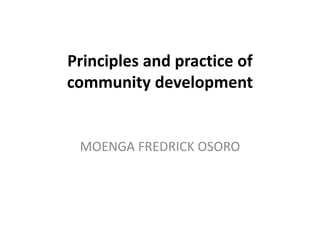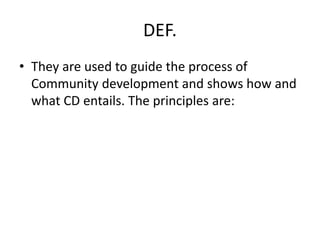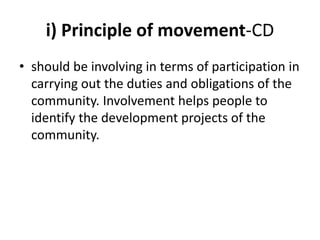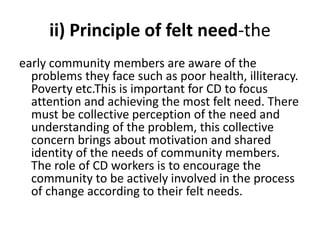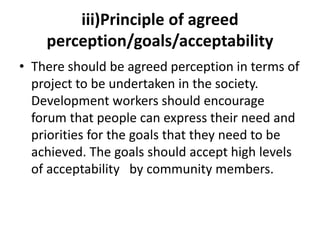Basic Principles of community development.pptx
- 1. Principles and practice of community development MOENGA FREDRICK OSORO
- 2. DEF. • They are used to guide the process of Community development and shows how and what CD entails. The principles are:
- 3. i) Principle of movement-CD • should be involving in terms of participation in carrying out the duties and obligations of the community. Involvement helps people to identify the development projects of the community.
- 4. ii) Principle of felt need-the early community members are aware of the problems they face such as poor health, illiteracy. Poverty etc.This is important for CD to focus attention and achieving the most felt need. There must be collective perception of the need and understanding of the problem, this collective concern brings about motivation and shared identity of the needs of community members. The role of CD workers is to encourage the community to be actively involved in the process of change according to their felt needs.
- 5. iii)Principle of agreed perception/goals/acceptability • There should be agreed perception in terms of project to be undertaken in the society. Development workers should encourage forum that people can express their need and priorities for the goals that they need to be achieved. The goals should accept high levels of acceptability by community members.
